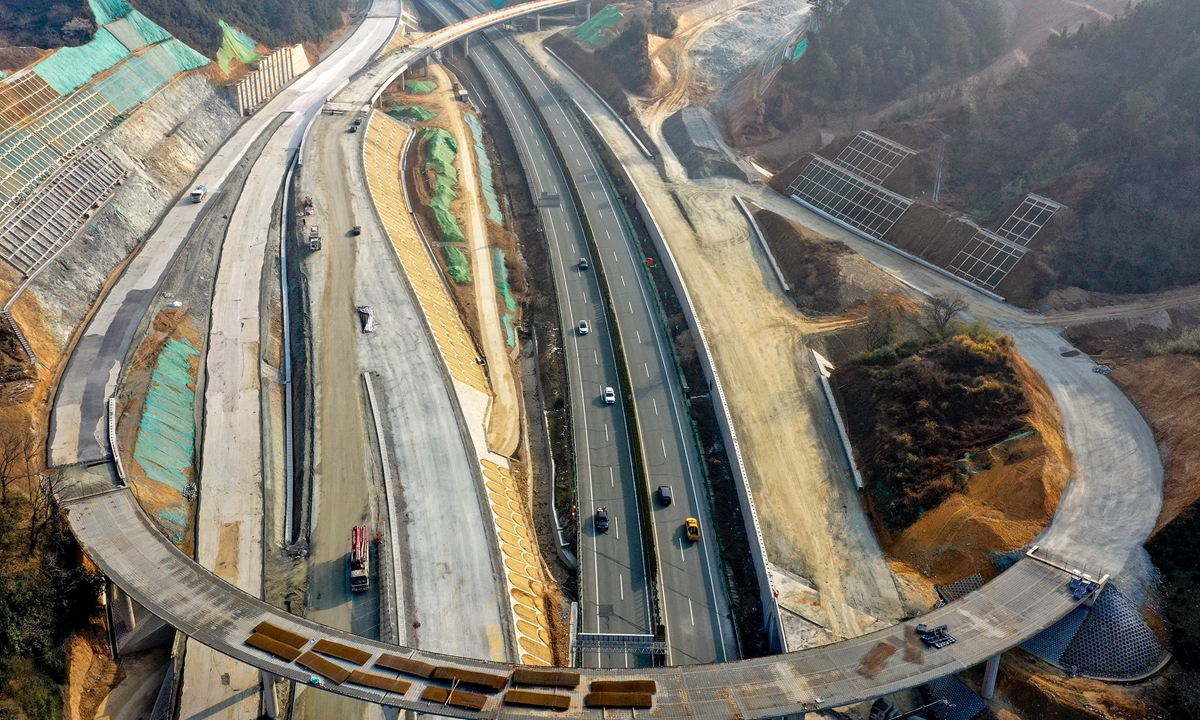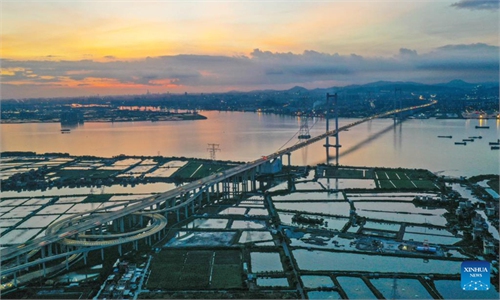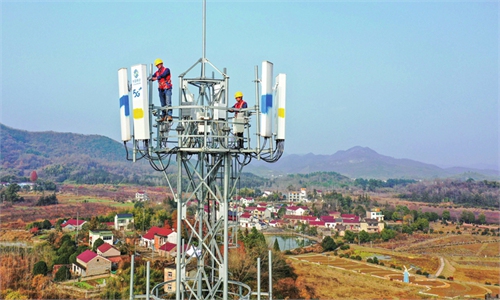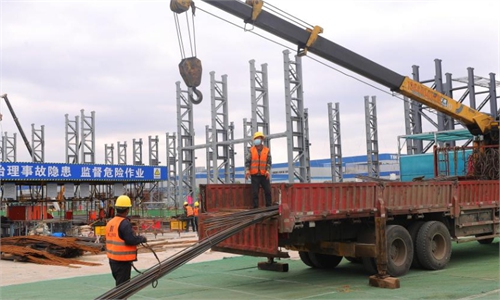China's excavator sales improve in July, indicating strong economic recovery
Accelerated infrastructure investment to boost growth: analysts

A high-speed express railway is under construction in Huangshan, East China's Anhui Province on January 20, 2022. Local governments are expediting the rollout of major infrastructure projects as the country faces growing downward economic pressure. Photo: cnsphoto
Sales of excavators, often considered a barometer of China's economy, jumped by 3.42 percent year-on-year in July, ending a 14-month decline, with domestic sales also improving significantly, as the world's second-largest economy is on the fast track of recovery with an accelerated pace of infrastructure construction and improving investment confidence.
A total of 17,939 excavators were sold in the month, up by 3.42 percent year-on-year, a reversal from the 10.1 percent drop in June, according to the China Construction Machinery Association (CCMA), citing sales data from the nation's 26 major excavator makers.
July was the first time since May 2021 that sales return to growth, according to the CCMA.
Domestic sales of excavators declined 24.9 percent in July, but improved significantly from a 35-percent drop in June. Meanwhile, exports jumped 72.8 percent in July, data showed.
Deemed a barometer of the vitality of infrastructure development, sales of these digging machines are usually backed by growth in mining and infrastructure construction, and they serve as a reliable indicator of the Chinese economy.
The sector's recovery reflects improving investment confidence and a stronger domestic economy, which is quickly shaking off the coronavirus' impact and moving onto the fast track of a rebound, which in turn reflects the effectiveness of pro-growth policies, Cong Yi, professor at the Tianjin University of Finance and Economics, told the Global Times on Thursday.
July was when COVID-19-affected projects resumed in full swing and new infrastructure projects were launched as the virus ebbed, Cong said.
According to industry website mysteel.com, a total of 5,669 projects were started across the country in July, a month-on-month increase of 19.5 percent. Total investment reached 3.483 trillion yuan ($517.04 billion), a month-on-month increase of 12.1 percent and a year-on-year increase of 26.2 percent.
Progress has been made on some key infrastructure facilities. Work on a project linking China's two mega water infrastructures - the Three Gorges project and the South-to-North Water Diversion Project - started on July 7, the Xinhua News Agency reported. The project is scheduled to be finished in nine years, and it will transfer water to the country's dry north.
Amid downward economic pressure, China has undertaken a flurry of pro-investment initiatives.
In the first half of the year, local governments in China issued 3.41 trillion yuan worth of new special-purpose bonds, which offered support to over 23,800 projects, 13,000 of them being newly launched, according to the Ministry of Finance.
Policy banks will increase credit lines by another 800 billion yuan to provide financial support for infrastructure building, and a mechanism will be set up to meet the needs of key projects, according to a recent executive meeting of the State Council.
The cabinet also decided in early July to raise 300 billion yuan through financial bonds and other instruments to supplement capital for infrastructure projects.
Along with the release of effective policies and raw material price drops, the growth rate of the country's infrastructure investment is expected to further accelerate to 10 percent or higher in the second half of the year, Tian Yun, a Beijing-based economist, told the Global Times.
He forecast that infrastructure investment will contribute around 1 percentage point to GDP growth in the second half, playing a larger role in promoting the stable recovery of the economy.
"The kick-off of more infrastructure projects is just a prologue. Looking ahead, infrastructure projects will continuously stimulate and drive the country's economic growth in the next few months, and their effectiveness will emerge in the third-quarter GDP growth rate, which may fall in the range of 4 to 6 percent," Cong said.
Between January and June, investment in the infrastructure sector rose 7.1 percent year-on-year, according to the National Bureau of Statistics.
Cong also said that although all major indicators are pointing to a recovery, especially in the export and investment sectors, a recovery of consumption still needs time, requiring stronger stimulus and policy support in employment and for small and medium-sized firms.



